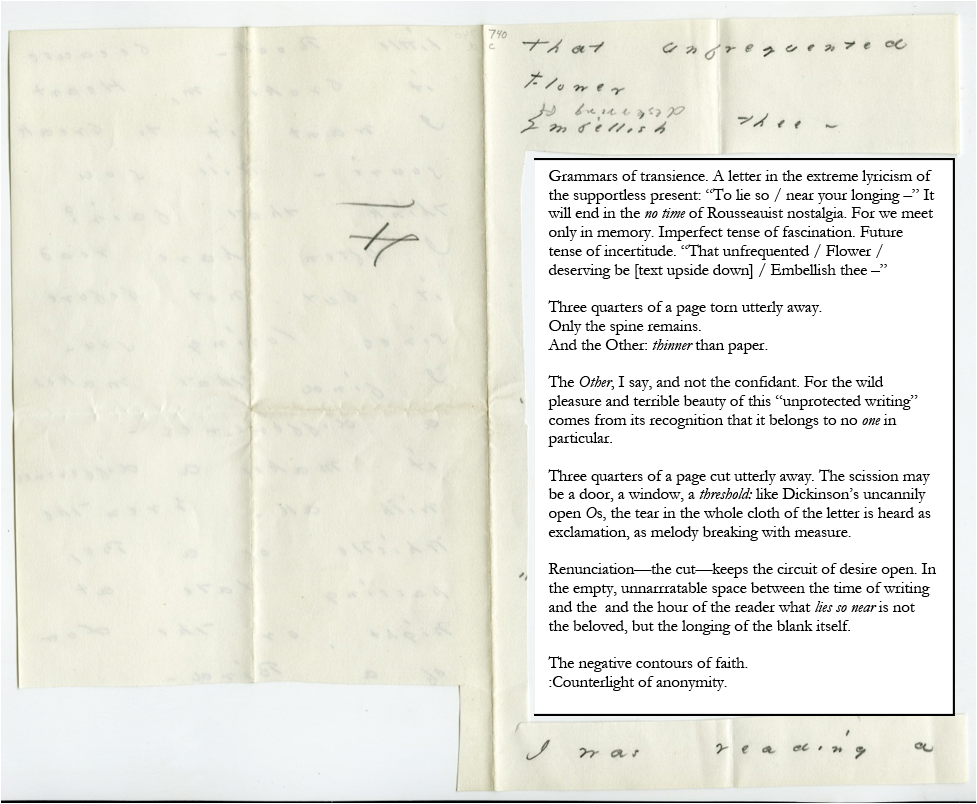- Installation 1: Imagining Emily Dickinson's Desks, 1870-1885
- Installation 2: Return to the Archives of Emily Dickinson's Late Writings
- Fly Leaves: Toward a Poetics of Reading Emily Dickinson's Late Writings (An Illustrated Essay)
- Installation 3: Bound in Blue Cloth Over Boards: Editorial Reconstruction of the “Lord Correspondence” in Thomas H. Johnson’s LETTERS, 1958
- Installation 4: Ravished Slates: Re-visioning the "Lord Letters" (Facsimiles / Diplomatic Transcripts)
- Lost Events: Toward a Poetics of Editing Emily Dickinson's Late Writings (An Illustrated Essay)
- Appendices
- Abbreviations
- Bibliography
- Acknowledgments
- Contact Information
Fly Leaves: Toward a Poetics of Reading Emily Dickinson's Late Writings (An Illustrated Essay)
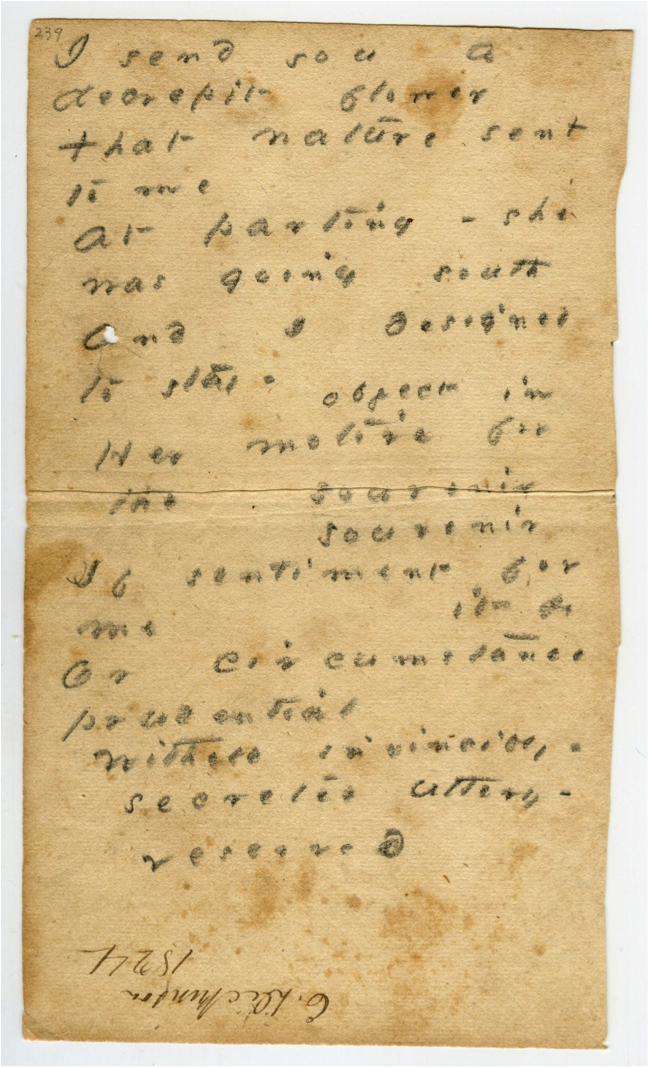
figure 1: A 239, c 1874. “I send you a / decrepit flower.” Written upside down on the flyleaf of Edward Dickinson’s copy of Irving’s Sketchbook. Reproduced by permission of the Trustees of the Amherst College Library, Archives & Special Collections.
Is there not room then for a new development in poetry, namely, Verses of the Portfolio? We have fancied that we drew greater pleasure from some of the manuscript verses than from printed ones of equal talent.
—Ralph Waldo Emerson, “New Poetry”
I want to work on texts that are as close as possible to an inscription—conscious or unconscious—of the origin of the gesture of writing and not of writing itself. Writing is already something finished. . . . What does it mean to work on texts that are “near to the wild heart”? . . . One has to have a touch of something savage, uncultured, in order to let it happen. It is the contrary of having been so much of a student, of a scholar, that one thinks that a book is a book, and that, if one vaguely has the desire to write, one says: I have to write a book.
—Hélène Cixous, Readings
“And all thy bones in beautie shall be clad”
—George Herbert
*
Marks in the Field
Mark (mark), n. 1. a. A boundary, frontier, limit. . . . 7. a. A target, butt, or other object set up to be aimed at with a missile or projectile. . . . 10. a. An appearance, action, or event that indicates something; a sign, token, symptom. 11. A sign affixed or impressed for distinction. . . . 11. e. A character made with a pen, usually a cross, used by illiterate persons in place of a signature. . . . 13. a. A visible trace or impression diversifying a surface, whether produced by nature, accident, or design, as a line, dot, written character, spot, stain, discoloration, scar, or the like...
—Oxford English Dictionary
[ ] canceled reading ^ ^ insert text ~~transposition
+ reworked for clarity [canceled] +

figure 2: “I think to Live – may be a | + Bliss --,” variants. MB II, fascicle 34, c. 1862. Reproduced by permission of the Belknap Press of Harvard University Press.
*
At the time of Emily Dickinson’s death on 15 May 1886 the status of her papers—the various and unorderly material body that survived her—was perilously unclear. With the exception of a handful of poems printed in local newspapers and magazines, she had published nothing: printers’ proofs, or what Gérard Genette has called the paratext of a literary work, did not accompany the poems, drafts, and fragments later discovered, so the story goes, in a drawer of her desk.1 Further, of these more than 2,000 compositions only 814 had been bound into the slender, handmade volumes her early editors, who later dismantled them, called fascicles. Containing between 11 and 29 poems composed in ink on uniform sheets of stationery, stab‑bound, and tied together with string, each volume constitutes a “room of her own,” an enclosed textual space in which Dickinson explored the contents of privacy and power.2 These she had kept together: on the manuscripts themselves puncture patterns and stress effects are the visible signs of a poet’s need for order and ingathering.
The remainder of Dickinson’s papers, however, the miscellaneous and often fragmentary fair and rough copy drafts of poetry and prose, were recovered in a state of astonishing disarray. Like the strands of variants extending a poem beyond its ending, these writings have broken off from the corpus and out of a series. A “constraining figure,” such as Michel Foucault imagines in “What Is an Author?” was needed to order the papers and to answer the question, so pressing, “How can one define a work amid the millions of traces left by an author after [her] death?”3
Under the sky of the late nineteenth century bibliography accomplished its fullest flowering. In the 1890s Roberts Brothers of Boston issued three volumes of Dickinson’s poems and two volumes of her letters. The Poems (1890), using Mabel Todd’s painting of Indian Pipes on a black, gilt-edge panel for its cover design, recalled the specifically female art forms of the herbarium, or album of pressed flowers, and marketed the volume as a precious, highly mutable objet d’art.4
Poems/, Emily Dickinson. Boston: Roberts Brothers, 1890–96. 3 v.: ill. (Facsim., v. 2); 18 cm.
First and Second Series edited by Mabel Loomis Todd and T. W. Higginson; Third Series edited by Mabel Loomis Todd.
Vol. 1 bound in vellum; stamped in silver and gold; gray cloth shelf-back stamped in gold; top edge gilt; Vols. 2 & 3 bound in gray cloth over boards; stamped in gold on cover and spine; top edges gilt; blue‑gray cloth over boards folder and slipcase; gray leather shelf-backs, stamped in gold.
The Letters of Emily Dickinson/, edited by Mabel Loomis Todd.—Boston: Roberts Brothers, 1894. 2 v.: ill., facsims (Vol. 1, port.); 18 cm.
Bound in green cloth over boards; stamped in gold on cover and spine.
By the middle of the twentieth century the Belknap Press of Harvard University Press had issued its three-volume variorum edition of the Poems along with a companion edition of the Letters, also in three volumes. In 1958 the editor of these works, Thomas H. Johnson, felt moved to write: “With the publication of these letters, the task of editing the poetry and prose of Emily Dickinson, undertaken in the spring of 1950, is brought to its conclusion. The introductions and notes which follow herein extend the narrative begun in the 1955 edition of the poems . . . and set forth the story of Emily Dickinson’s life and writing as fully as I know how to tell it.”5

figure 3: “I play at Riches – to appease,” variants. MB II, fascicle 38, c. 1863. Reproduced by permission of the Belknap Press of Harvard University Press
An aside at the very end of Johnson’s “Introduction” reads: “All autograph letters are presented in their verbatim form.”6
*
Figures (I)
There is nothing left to do. Bound in blue cloth over boards, stamped in red and gold on cover and spine, Dickinson’s literary remains are now with beautie clad and the “constraining figure” through which we read her works complete. There is nothing left to do. Yet if we imagine that “the categories of the beautiful, the cultural, and the authentic have changed and are changing,” there may be something to undo.7
This edition is about undoing. Taking as its specific subject forty late pencil drafts composed in the aftermath of the fascicles, it both bears witness to and follows the trajectory of a desire—Emily Dickinson’s—to articulate a new space of knowledge and to inscribe herself otherwise than within the dominant discourse of the day. In A Theory of Literary Production Pierre Macherey observes, “The specificity of a work is also its autonomy. . . . It is the product of a specific labour, and consequently cannot be achieved by a process of a different nature. [It] has its beginning in a break from the usual ways of speaking and writing.”8 Dickinson’s departure—from the received forms of signification as well as from the “bodies of print, secured in chases for printing at one impression” (OED)—marked her discourse as deviant: from deviatus, deviare, to turn aside, as from a route, course, way, etc., to digress, as from a line of thought or reasoning, to veer, wander, stray. . . . Fathomlessness is the risk this writing runs: “Of Bliss the Codes are few –” (JP 1568; FP 1597).
Dickinson, Emily, d. 1830–1886. Papers, 1829–1932 (inclusive); 1853–1886 (bulk). 71 boxes and 30 volumes. . . . Access may be restricted. Details at the repository.9
“If you are a woman,” writes Susan Howe, “archives hold perpetual ironies. Because the gaps and silences are where you find yourself.”10 The primary setting of my research was, ironically, an institutional one: the archive—vault, repository, cache. For today the forty manuscripts I chose to focus on are located in the Emily Dickinson Collection of the Amherst College Library, where other hands, the scientific hands of the bibliographer and his assistants, have sorted, cataloged, and at last linked the majority of them with the name “Judge Otis P. Lord.” Since then they have (dis)appeared to us as the Lord letters.11
Yet this very name, a proper name that might be expected to act as a still point in a reading of the letters, turns out to be most unstable. To begin, though many of these manuscripts are presumed by scholars to be early drafts of Dickinson’s letters to Lord, others, composed on the versos of medical prescriptions, over the seals of envelopes, and on fragile slivers of stationery, have only the most peripheral or accidental connection to him. With rare exceptions, the singular provenances of the fragments have long since been lost, while the tangled and entangling histories of their discovery, mutilation, and passage from hand to hand remain uniformly gray. Finally, the nearly one hundred leaves descend to us uncrossed by either salutations or signatures, Dickinson’s last and startlingly original “messages” refusing to define the specific relationship that occasioned them in order to explore the more radical coordinates of anonymity. To read them is to sift the several darknesses and to touch, fleetingly, “Recipient Unknown.”
Judge Lord: here a proper name points to an allegorical name. In the final decade of Dickinson’s life the Law approached her clothed as the beloved. She called (to) it: My lovely Salem, my Sweet one, my blissful Sophist. This essay-edition about undoing is also about unbinding, about the relationship between the Law (a love?) that binds and a discourse beyond the reach of canonization and the economy of bookmaking. In the 1870s the quire charts came unfastened. The brief, final scene of Dickinson’s writing is played out beyond the asylum of the book on single sheets of fine stationery and on the torn leaves of household leavings. Ink dissolves into lead’s transience, and the scripted forms, drifting across loose pages in fantastic designs, possess a telos of their own. Not poems, not letters, never a “masterpiece,” these private documents are the “fragments of a lover’s discourse” written across night antinomian, some pieces of a trial record challenging our old ideas about authorship, authority, genealogy, and genre—or, a series of line drawings.12 They require of us a new nomenclature.
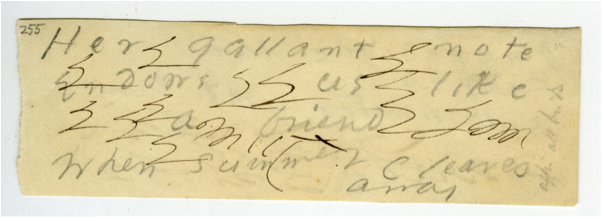
figure 4: A 255. Pen slashes on a fragment of stationery containing lines from “After all | Birds have | been investigated.” Reproduced by permission of the Trustees of the Amherst College Library, Archives & Special Collections.
*
Manifest Content: Works on Paper
tools:
lead pencil nib (eraser)
paper} Queen’s Head Capitol Oval
embosses watermarks chainlinesblurs
straight pins scissors
accidents
At the far end of the twentieth century we have become distrustful of and inarticulate about our encounters with beauty: the lyrical movement of forms in the white space of the page, the whirlwind of calligraphy, the iconicity of watermarks and embosses—Queen’s Head, Flower‑in‑Oval, Orient—and their mysterious relationship to Dickinson’s “messages.” This work, the material record of my encounter with a group of her late drafts, is undertaken “in praise of hands”: in the pages that follow a shift from the lexical toward the visual takes place so that, among other things, the act of criticism supplies what Susan Sontag calls an “accurate, sharp, loving description of the appearance of a work of art.”13 Here deciphering gives way to witnessing: its labor is to make explicit something unprecedented—and, in the process, to reveal the acts of writing and silent reading as visual poems.
In The Genesis of Secrecy, a book all about darkness and divination, Frank Kermode writes, “I shall not peer into the past for a glimpse of a man writing, out of a need I cannot know, a book of which the content derived from perhaps a few pieces of paper.”14 Yet, if driven by the desire to be among the small band of “insiders,” among those with “immediate access to the mystery,” I were to gather together the scattered wafers of stationery to study the “symbols traced upon paper” (L 15) or the patterns of Dickinson’s thought as they are realized in her habits of composition and in the marriages, sometimes nearly illegible, of lead point and paper, would she appear, illuminated, on the surfaces of those fragments?
A winter setting opens up a scene of composition.
*
Passages of Leaves
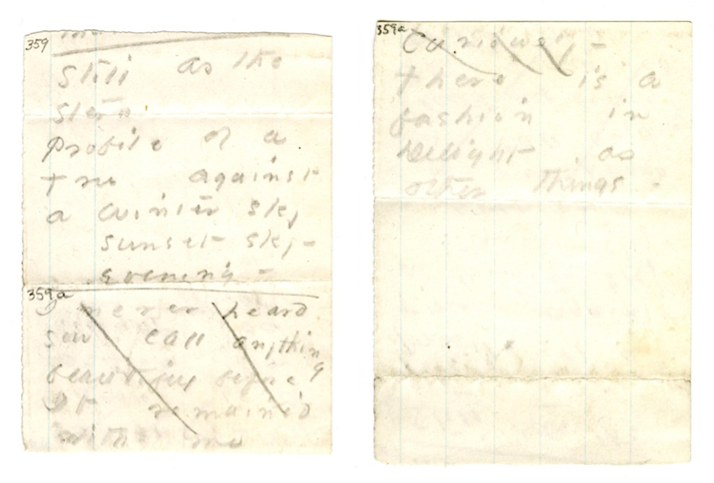
figure 5: A 359, c. 1880. Lines penciled on a scrap of white, blue‑ruled stationery, approximately 76 x 56 mm. Reproduced by permission of the Trustees of the Amherst College Library, Archives & Special Collections.
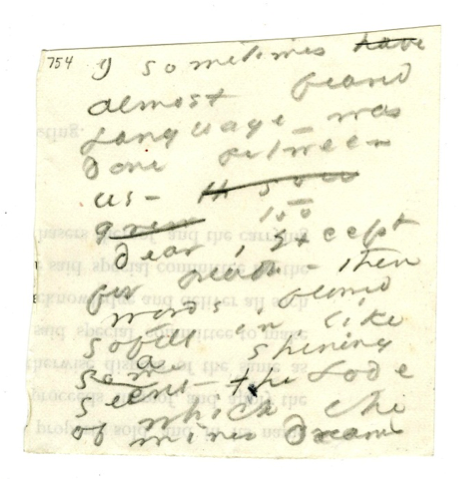
figure 6: A 754, c. 1880. Lines penciled in the margins of a legal form, approximately 73 x 69 mm. Reproduced by permission of the Trustees of the Amherst College Library, Archives & Special Collections.

figure 7: A 759, c 1880. Lines penciled on a strip of brown wrapping paper, approximately 50 x 192 mm. Reproduced by permission of the Trustees of the Amherst College Library, Archives & Special Collections.
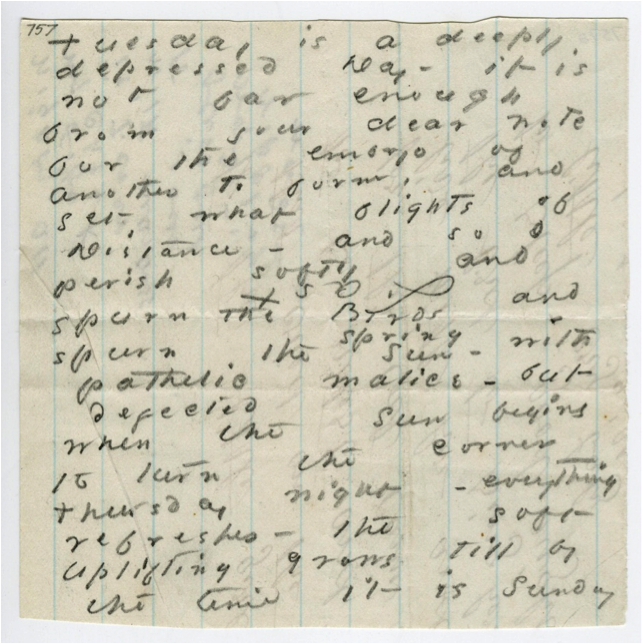
figure 8: A 757, c. 1878. Lines penciled on a fragment of cream, blue‑ruled notebook paper, approximately 101 x 101 mm. Reproduced by permission of the Trustees of the Amherst College Library, Archives & Special Collections.
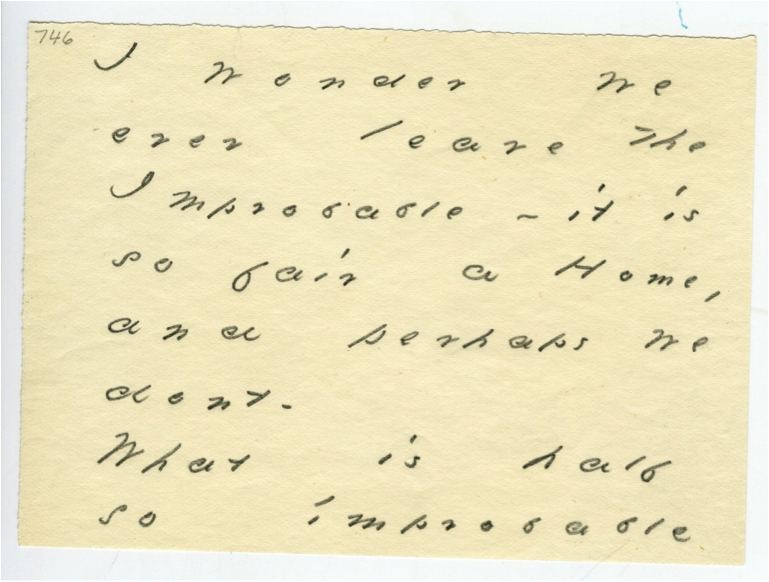
figure 9: A 746, c. 1880 or 1882. Lines penciled on a partial leaf of wove, off-white stationery, approximately 89 x 123 mm. Reproduced by permission of the Trustees of the Amherst College Library, Archives & Special Collections.
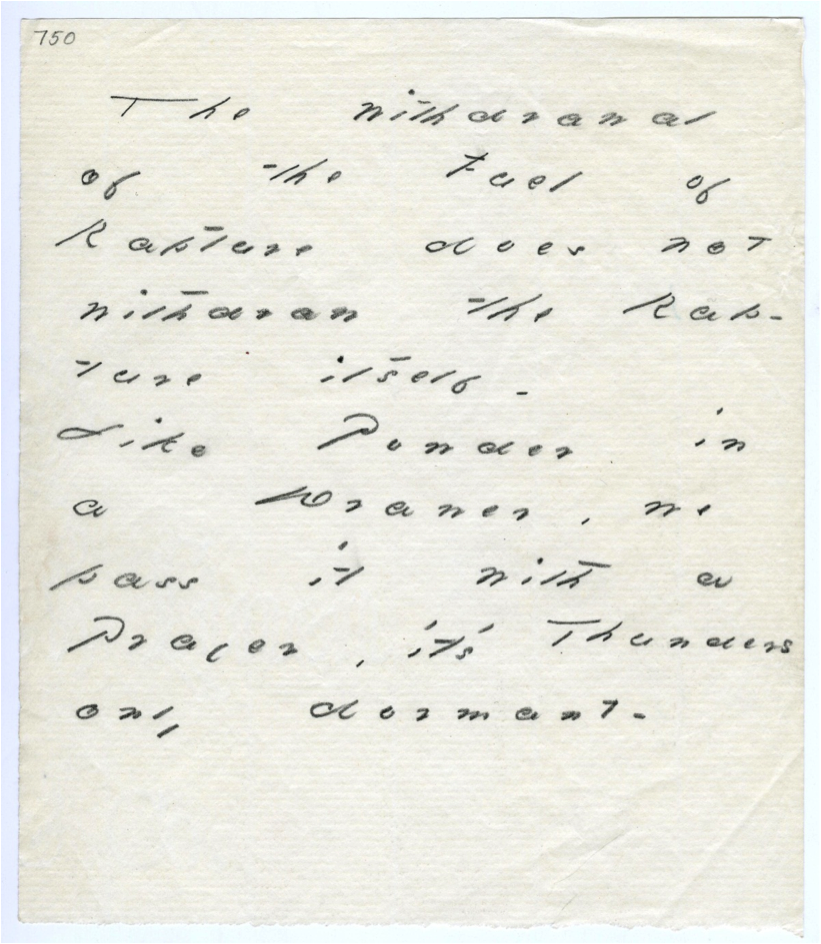
figure 10: A 750. About 1883. Lines penciled on a partial leaf of laid, off-white stationery watermarked Pure Irish Linen F. H. D. & Co., approximately 153 x 132 mm. Reproduced by permission of the Trustees of the Amherst College Library, Archives & Special Collections.
*
In the spring of 1863, after reading Shakespeare, Emily Dickinson wrote, “I thought I should tear the leaves out as I turned them.”15 In the 1870s and 1880s the leaves of her own work lay scattered: the late fragments are visible signs given to remind us that “the ‘evidence’ that we have to take on the burden of the linkages between thoughts or phrases does not mean that we ever master them.”16 Similarly, our pursuit of “Emily Dickinson” through the printed editions of her poems and letters, through psychobiography, and through the countless interpretive studies of her work, only confirms her place outside the discursive economy: before and beyond any possible commentary the traces of a vision row in extremis and in antimony.
You ask me what
my flowers said –
then they were
disobedient – I gave
them messages –
(Master Letters, “Letter 1”)
*
Sketching, Writing, Handwriting
Whatever its sophistication, style has always something crude about it: it is a form with no clear destination, the product of a thrust, not an intention [emphasis added], and, as it were, a vertical and lonely dimension of thought. Its frame of reference is biological or biographical, not historical: it is the writer’s “thing,” his glory and his prison, it is his solitude.
—Roland Barthes, Writing Degree Zero
April 16, 1862: I took [Emily Dickinson’s letter of the previous day] from the post office in Worcester, Mass., where I was then living. It was postmarked “Amherst,” and it was in a handwriting so peculiar that it seemed as if the writer might have taken her first lessons by studying the famous fossil bird-tracks in the museum of that college town.
—Thomas Wentworth Higginson, “Emily Dickinson”
Although Dickinson concealed her face from us, it is still possible to speak of the physiognomy of her hands. In the single daguerreotype of the poet, probably taken at Mount Holyoke Academy when she was just seventeen, the aptitude of her long and tapered hands—there paralyzed around the stock bunch of dried flowers given to sitters who appeared nervous—remains hidden.17 Instead, their true progress toward liberation is traced on the pages of her manuscripts, on which Dickinson makes manifest, exterior, the desire of a pencil pressed upon paper, the intimate relation in her artistic process between conception and execution, or, more simply, the significance of touch to writing. . . . On the slates of the 1870s and 1880s inscribing herself otherwise, autobiography, involved the transformation of the dead, restricting letter into a living letter of flame or spirit: autography. And if, as Walter Ong writes, “control of position is everything in print,” these handwritten drafts record the alternative pleasures of driftwork and disorientation.18
In Dickinson’s work two broad scriptural “styles,” two hands—one for rough copy drafts, another for fair copy drafts—reflect and translate into space two interior movements in the mind: “Breaking in bright Orthography” (JP 276; FP 333)
The style for rough copy drafts, which remained constant even throughout the late years, is also the style of the dictation—a way of writing in speaking: the hand jolts into action. “But ought not the Amanuensis [also] to receive a Commission also –” (PF 23), Dickinson asked in last decade of her life. Executed quickly—it is possible to imagine involuntarily—these drafts or inscriptions in which she fixed the nuclei of still unwritten poems reveal the rhapsodic quickenings of thought before their coalescence into a “work.” Here writing is a state of emergency or rapt attention in which the experience of immanence—the “hearing” of what demands to be written even before one’s thoughts have been ordered—is characterized by grammatical breakdown, lack of control, visual parataxis and aphasia. The cometary pace of her thought determines her choice of materials—whatever lay close by—and is registered in the disturbance of the scribal hand: the script is small and angular, text is superimposed over text, fault lines interrupt the narrative, and, all along the margins, words and solitary letters appear sideways and upside down. By drafting within the drive of writing, Dickinson reached the torn and asymmetrical edge itself at which discursivity passes over into seizure and writing, against the (blue) rule, into risk or scattering. Together or separately, her late rough copy fragments appear as footnotes to a retrieveless oeuvre. “The message is the messenger”; no gloss is possible.19
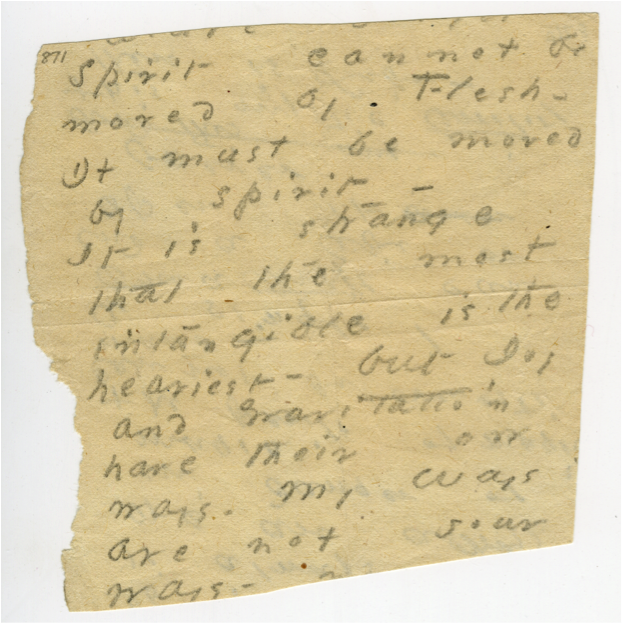
figure 11: A 871, c. last decade. “Spirit cannot be | moved by Flesh –”. Reproduced by permission of the Trustees of the Amherst College Library, Archives & Special Collections.
The autocracy of forms may thus find its end in a poetics of immediacy, in an extempore “notation on extreme states of emotion, jotted in the margins of the moment.”20 Yet in the passage from rough copy drafts to fair copy drafts, as in the passage from one realm to another, the poetics of immediacy itself undergoes a change, escapes, into what Kierkegaard called the “immediacy after reflection.”21 This latter immediacy, escaping both comprehension and control, is most clearly manifest in the works of those writers for whom periods of acute crisis are succeeded by periods, or rather spaces, of the utter calm of anomie. In Shelley’s Bodleian manuscripts, for instance, some of which suffered a sea change before returning to us, letters are suddenly unwoven in sketches of brambles or trees in full leaf. And, similarly, with the gifted and mystical mind we limit with the name Emily Brontë, the end of “tyrannical prehension,” the seizing of the pen, is announced in her haunting marginal drawings of keys, flowers, and concentric circles. In Brontë’s private notebooks the stylus twists into the branch of a fir tree or feather of a lapwing. Writing traces the way to get lost: in the aftermath of logic, on the moor-body of imagination.
Unlike Shelley and Brontë, Dickinson rarely drew in the margins of her work. Instead, her escape into the latter “style”/hand is at once signaled and accomplished through a practice—a poetics—of copying in which calligraphy itself becomes expressive or aesthetic as it transcends the need to render the “fixed and unvarying forms of letters” and responds unconsciously to the chance ordering of words across the empty page.22 By 1879, some years after Dickinson had abandoned her practice of binding poems into packets, she had also exchanged her pen for a pencil. Eyestrain, caused by the glare of the northern snow light or only the whiteness of paper, is most often held responsible for the change of writing instrument. Yet, as Henri Focillon observes, “the vocation recognizes or at least anticipates its material”: the exchange of ink for lead point may also mark Dickinson’s increasingly acute sense of transience.23 For, unlike the pen, which produces a permanent memory trace, the lines drawn by the lead point of the stylus are easily erased and retraced so that each act of copying constitutes a new performance—improvisation or extension of a thought-event. Like Hokusai’s minimalist illustrations executed with a twig, a bird’s feather, and, at last, the end of an egg, Dickinson’s late writings continually reopen the field of verbal‑visual exchange in order to explore the links between inscription, accident, and re-visioning.
Using only pencil and paper, the greatest economy of means, Dickinson probed the extreme freedom of the media. Upon first looking at her word-paintings, the fluid details of their estranged orthography appear as in a dream: dashes become waved or wandlike, the streaming ascenders and descenders of the ds and ys resemble lighted wicks, the crosses of the Ts, detached from their stems, travel fast to left or right, and Dickinson’s Os and Ws appear as ciphers of an enigmatically open code. Air circulates easily in the upper regions of the page on which the alphabet, like a drift of birds, is blown into “sets of possible courses.”24 Far from approximating the orderly pages of print, as Theodora Ward has argued, Dickinson’s late compositions lead us out beyond the carceral space of the book: on the loose leaves of her open portfolio writing assumes the qualities of respiration; the strokes of the pencil are centrifugal, each one sweeping away from the body of the writer to a free zone in the outside.25 On the “spectrum from pure picture to pure letter” this writing is “at both ends at once.”26

figure 12: Jen Bervin, from the Dickinson Quilts. Reproduced by permission of the artist.
*
In the early 1860s acute eye trouble led Dickinson to consult a Boston physician; the fear of blindness—an “eye put out” (JP 327; FP 336)—attended the beginning of writing. Paradoxically, at the end of her life she penetrated so far beyond the horizon of ordinary appearance that opacity itself became luminous. In the following fragment, one concerned with clairvoyance, the “Eyes,” magnified and surrounded by a matrix of visual rhymes, gaze back at us from across a great distance. “Space is as the Presence –” (L 378): here the human actors have disappeared, and the emptiness of the late manuscripts—the unlinking of letters, the expatiatory homelessness of solitary lead marks moving across the page, and the silences falling around them—reflect the writer’s sense of dispossession and the joy that “has no need of heirs or children.”27 Reading, once a strictly linear process, a reading within the rule, now requires the cultivation of an “equally floating attention,” a tuning of page or sky. The mind is unaccompanied, “gone up,” as Ruskin wrote, “to whiteness.”28 The fair copy fragments of the 1870s and 1880s could be the captions to a series of Luminist cloud studies.

figure 13: A 760, c. last decade. A pencil draft on a partial leaf of laid, off-white stationery embossed [ORIEN]T, approximately 100 x 125 mm. Reproduced by permission of the Trustees of the Amherst College Library, Archives & Special Collections.
*
They have changed eyes.
(The Tempest, act 1, sc. 2)
*
Biography tells us that, by the age of thirty, Emily Dickinson, a single woman without intellectual station, suffered from acute agoraphobia—the abnormal fear of being in crowds, fear of empty spaces, dread of the marketplace. From the early 1860s until 1886, the year of her death, she rarely left her home. Solicitations from outsiders, even from her mentor Thomas Wentworth Higginson, were politely but firmly refused. “I do not cross my Father’s ground to any House or town” (L 330). Her death certificate reads simply: “Occupation: At Home.”29
cross lift break stile (style) bars broke
The biographical and textual conditions of a writer’s life do not always act in collusion: in the 1870s Dickinson did cross her “Father’s ground” through her writing. She crossed outside quatrains and paragraphs and strayed beyond the resolution of sequences and series into rich and strange textual fields. For, just as “love is and ever has been one of the great scenes of textuality,” the love letter (fragment, draft) celebrates diaspora, a refusal on the part of the subject to move to the center, perpetual marginality.30 Addressed to an absent other, lost the moment it is sent, the love letter is a figure of the wanderer or the deviant. It may also be a figure for “woman” herself, defined under the old patriarchal Law as the very principle of deviance, swerving, extravagance.
In Dickinson’s late letter‑fragments Ariadne’s thread connects writing, wandering, and femininity. Text and woman, both boundary figures, remain elusive:
. . . Please excuse / the wandering / writing – Sleeplessness / makes my Pencil /
stumble – Affection / clogs it – too – (A 742)
. . . Threading with you / this lovely Maze, / which is not Life / or Death – (A 734)
. . . Sweeter / of course than / not writing, be‑ / cause it has / a wandering / Aim, . . . (A 744)
. . . for I am / but a restive / sleeper and often / should journey / from your Arms
/ through the happy / Night, . . . (A 740)
. . . The Bible says very / roguishly, that the / “wayfaring Man, though / a Fool –
need not / err therein”; Need / the “wayfaring” Woman? / Ask your throbbing /
Scripture – (A 740)
A tale of love is always told in medias res. In the “pivotal yet impossible present” in which the love letter unfurls, writing is rewriting, crossing (out) and re-visioning.31 Ultimately, there is no “book” of love but only the unfinished parts of books, passages of leaves, “chapters [songs] in the night” (A 753).
In Dickinson’s late work, work trusted to fortune and stripped of protection, she wandered outside of beginnings and endings, outside all forms of address and signature. In her unauthorized discourse something—we may call it interiority, difference, or singularity without shelter—escapes apprehension and assimilation into the logic of the same. At last she wandered so far from the center that her refusal of destination (final intentions) itself became her aesthetic. Here language is “reformd to nothing but Delight which” (A 132), and writing is inscription without place. Agoraphobia was her alibi, “I” her alias.
Emily Dickinson is not a domestic poet; she is not “At Home.” The economy in which she worked, Love’s deviant economy, is also the economy of the Outlaw. In the long night of her discourse the lover (of Lord? of Language? of the “elusive singular”?) came in the guise of thief, debtor, felon, and wayfarer. And in this alternative economy, opposed to consistency, productivity, and profit, Dickinson issued her private, successive editions of abandonment. The question of “copyright,” like the question of her “career” itself, never arose. Unwilling to make herself over in the image of the printer, or to disrupt the “organic relationship between [herself] and [her] literary work,” she chose to remain outside the regulation/protection of the Law.32 How could she hope to protect a writing at the antipodes of automatism, a writing in which each copy of a draft may be fully realized only outside the modes of mechanical reproduction and mass production? To her gazeless editor’s request for a daguerreotype, Dickinson replied, “Could you believe me – without? I had no portrait, now, . . . It often alarms Father – He says Death might occur, and he has Molds of all the rest – but has no Mold of me” (L 268). And signed the letter “Your Scholar.”
In 1958 another scholar completed the transcription of Dickinson’s visionary writings. This latter scholar, a highly regarded textual critic personally associated with Harvard University, prepared an edition of the letters and prose fragments that erased the intimacy between the poet and her labor and disavowed the importance of the singular conditions under which Dickinson wrote: mediated by a flotilla of dates, names, and scholarly annotations, even the wild and beautiful irresolution of the late compositions vanishes. Moreover, in his haste to superimpose his scholarly apparatus and ideology of the definitive text over her anticanonical aesthetics of radical variation, Thomas H. Johnson also overlooked Dickinson’s incarnational poetics and her conversion of the very aims of copying. For Dickinson the aim of transcription is neither greater legibility—the production of a “fine hand”—nor the government of a multiplicity of hands in conformity with a prescribed model.33 Rather, the event of copying constitutes a mysterious and sensuous form of translation in which trans-, the carrying across of a message, is also always a carrying away and an abandonment of that message in the arms of alterity’s angel. “And carried me away –” (JP 754; FP 764) into “Sovreign Woods” and into the “spell of difference” is this amanuensis’ description and affirmation of her experience of language as overwhelming passion and radical departure.34
So far, Dickinson’s editors have refused to follow the trajectory of her hand, just as they have refused her invitation, to be “carried away,” jolted by language into a still unknown future. Unlike her successive editions of abandonment, their transcriptions—the greatest “Master Narrative” of all—have been copyrighted.
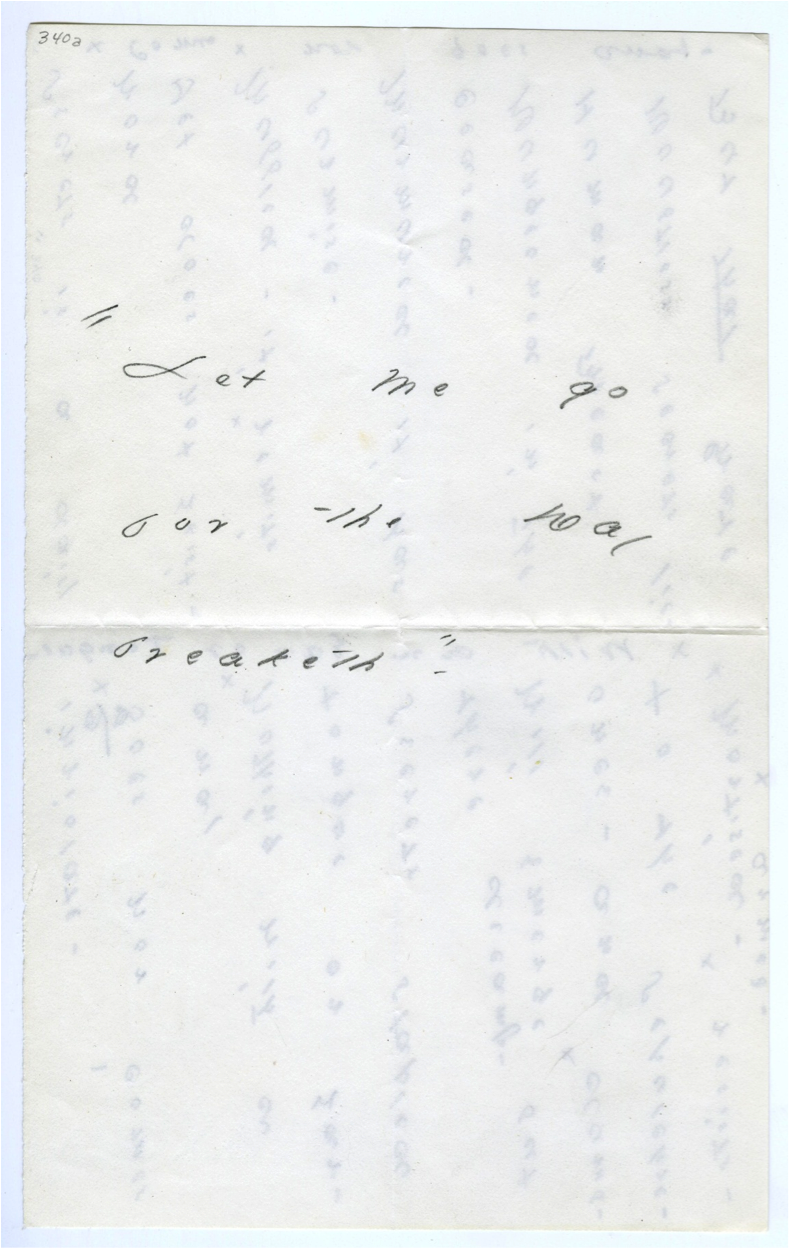
figure 14: A 340a, c. 1881. Lines penciled on a partial sheet of white, wove stationery watermarked WESTON’S LINEN 1876, approximately 203 x 125 mm. Reproduced by permission of the Trustees of the Amherst College Library, Archives & Special Collections.
*
Mutilated Texts
Every printed text repeats [the] ambivalent experience of the body written by the law of the other. In some cases it is only a distant and worn metaphor of this experience that no longer works on incarnate writing: in others, it is a living memory of this experience aroused when reading touches the body at the points where the scars of the unknown text have long been imprinted.
—Michel de Certeau, The Practice of Everyday Life
In his transcriptions of the Lord letters, Thomas H. Johnson often indicates breaks and disturbances in the text with a set of brackets or a series of ellipses. . . . But writing, like love, is a brink, not a seam (a seeming) to soothe textual transitions or silence our questions. Someday textual criticism and editorial theory will have their “destined appointment” in a reading eloquent about edges and borderlines, asymmetrical angles and erasures, in unknown texts. Dickinson’s work calls for that reading to begin.
When speaking of the iconography of the page circa 1870, it is important to note how many of the late manuscripts descend to us in inconstant forms. Of the twenty fair copy fragments included in this edition, ten have been altered in some way.35 Of the remaining ten, only three suggest, by the falling rhythm of their inflections—for in this discourse of desire periods are almost always replaced with dashes—a sense of closure. In many cases a single passage from a letter of unknown provenance, now either destroyed or beyond reconstruction, has been preserved, scissored from a lost “whole.” In other cases the alterations are primarily internal: the body of a letter is shaped by the damage it has suffered, by great lacunae, by tears in the whole cloth of presence. In a few, rare instances only the spine of a leaf remains.
The mutilated letter‑fragments are cases without criteria. So long as the censor of these texts, “that mysterious personification of the force that forbids,” remains anonymous, and the date(s) of the mutilation uncertain, our analysis of them seems limited to a description of their contexts and contours, perhaps extending to speculation about the sharpness or bluntness of the instrument used for cutting and the size and strength of the hand responsible.36 It may be that the hand, most often imagined as the alien hand of Austin Dickinson, that almost surely erased, canceled, and destroyed manuscripts of Dickinson’s early letters and poems to his wife, Susan Gilbert Dickinson, is responsible for these further defacements.37 Once decoded, the late drafts may constitute an oblique message about a brother’s intimate and violent disfiguration of his sister’s work. Tears in the manuscripts may be the visible signs of pain—erasure, eclipse; the cut may figure the fate of a woman who writes and who wanders, waywardly.

figure 15: Verso of A 80‑9, c. 1858. A torn leaf of stationery containing lines from “One Sister have I in our house.” The lines have been heavily canceled in ink. Reproduced by permission of the Trustees of the Amherst College Library, Archives & Special Collections.
Alternatively, these manuscripts may have been cut apart by close relatives or, perhaps, by Dickinson’s first editor, Mabel Loomis Todd, and given away to approved admirers. The distribution of autographs was fairly common in the nineteenth century—Mary Shelley, for example, often made souvenirs of her late husband’s papers—and Dickinson’s drafts, less “valuable” than her fascicles, would have been especially susceptible to such treatment. The fair copy fragments that have been neatly scissored into squares may have been prepared as “keepsakes” but never sent, while missing passages scissored from pages now appearing as empty frames may ultimately be located and fitted together again.
The leaf, however, is a kind of fabric—linen. Is it not also possible that Dickinson, who links pencil and needle, writing and Ariadne’s threading, and whose dashes may be lost stitches or seams torn out, cut the late drafts herself even as she worked on them? After 1870, as Jeanne Holland finely observes, “a strategy Dickinson uses to keep her verse ‘alive,’ . . . is her scissoring of other texts,” texts including the New England Primer, her father’s Dickens, and her own Bible.38 Unlike the heavily censored manuscript of “One Sister have I in our house,” none of the forty manuscripts reproduced here has been canceled with ink or roughly erased. Rather, the hand that scissored the late drafts worked carefully, as carefully as the hand that had once sewn poems into packets or prepared “cut-outs” to affix to letter-poems: the touch, the contact of hand and paper, is so intuitive as to connote a singular style.
The practice of cutting I propose here, then, bears no relation to the intimate and disturbing practices of self‑censorship, or to what Susan Stanford Friedman calls the “psychodynamics of repression and desire” so often operative in women’s narratives written for distribution in the public domain.39 Acting as author and publisher of her private texts, withholding or disseminating them as she chose, Dickinson was not subject to the demands of the market economy. Nor does it seem possible that in the end she internalized the strictures and prohibitions specific to the brief historical moment in and against which she wrote, at last turning them violently upon her own drafts, disguising and cutting them to conformity. Had this been the case, what in these fragments could have been spared?
Rather, in this hitherto unexplored version of the cutting the event of scissoring may be read as integral to Dickinson’s compositional process—as a rejection of closure, an extreme version of passing a work through proof, or as part of her method of radical inquiry. Found among Dickinson’s papers after her death, these fragments may be secret versions of texts never sent, a species of “prose‑poem,” or a poetic critique in which maximum clarity is achieved via minimal lyrical effects. In the end no reconstruction of the drafts’ contents is possible or wise. Like their subject, desire, they remain beyond legislation in the realm of the irremediable.
Scissoring may be the inscription of a crossing—into extragrammatical spaces, into the open space of the feminine in which ravage rhymes with ravish: to fill with strong emotion, especially joy, rapture, or ecstasy, to seize and to carry off by force, violent removal. . . . In the end, the force that forbids may also emancipate: “‘No’ is the wildest word we consign to Language” (A 739).
Today my thought of a particular poem or letter‑fragment, once a thought of a lexical pattern only, is accompanied by a memory of the page upon which that pattern composes itself. Moreover, the double memory of visual and lexical patterns occurs with the greatest clarity and force in those cases in which a manuscript has been mutilated—as if the damage it has suffered confirms its beauty and authenticity, as if absence is the most consoling sign of presence. The traumata have become part of the text.
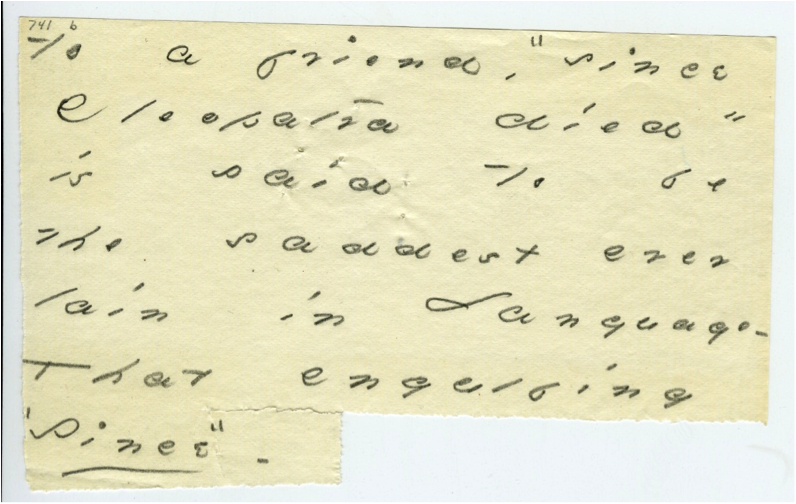
figure 16: A 741b, c. 1881 or 1882. A torn leaf from a letter‑fragment composed on laid, off‑white stationery, approximately 80 x 127 mm. Reproduced by permission of the Trustees of the Amherst College Library, Archives & Special Collections.
*
Ravished Slates
Only in the realm of speculation is it possible to assign a proper name to the author of the cuts. In actuality He or She remains anonymous, possibly unauthorized. Yet the very lack of clear authorial intentions opens up, perhaps for the first time, questions about the silent, unspoken intentions of the drafts themselves—not only as the “textual unconscious” of a “final” (lost) text, or as clues to its meaning, but as significant figures in and of themselves. In the 1870s and 1880s Dickinson was haunted by the doors that opened for others, leaving her outside the mystery, this side of nature: “‘Open the Door, open the Door, they are waiting for me,’ was Gilbert’s sweet command in delirium” (L 873). Impossible to decipher fully, the late compositions may still illuminate the relationship between secrecy and divination, access and otherness, grace and transgression. Here the blank writing surface may suddenly become a mysterious light table.
***
The case of A 740: “To lie so / near your longing –,” a love letter, or, writing as cutting. About 1878 or 1879. A letter‑fragment on parts of seven leaves of woven, white stationery, watermarked weston’s linen 1876. The manuscript (reproduced in full in Part II of this sit) has been cut in five places: on the first leaf a small notch has been made in the upper left-hand corner; on the third leaf the bottom edge of the paper is wavy where scissors have cut the linen; on the fourth leaf five lines alone survive, four above the beginning of the cut and one below; on the fifth leaf approximately three lines have been cut from the end of the page; and of the sixth leaf nothing remains but the spine upon which two sets of quotation marks and three unidentified pencil marks are the only signs of inscription . . .
In this instance the pages of the document have been so fiercely scissored that only a ghostly text or an unheard melody remains. Yet by following the cuts in the paper as we would an enigmatic, albeit negative, kind of handwriting, while also permitting them to open up blanks in our own commentary, reading approaches the experience of writing. “A something overtakes the mind –,” Dickinson wrote; “we do not hear it coming” (PF 119). In the empty space of the radically mutilated fourth leaf of A 740 (fig. 20), I have entered a meditation on negative capability, on absence and faith. It begins with the lines of a lost poem, itself a turn, or trope, of transformation: “That unfrequented / Flower / deserving be [text upside down] / Embellish thee –”:
figure 17: A 740c, c. 1878 or 1879. A cut leaf from a fair-copy pencil draft composed on parts of 5 sheets of wove, white stationery watermarked Weston’s Linen 1876. Reproduced by permission of the Trustees of the Amherst College Library, Archives & Special Collections.
Again and again Dickinson’s late manuscripts reveal the impossibility and danger of imagining a plot or a stable theoretical framework into which we may “insert” a reading of her work. Here frames, both metaphysical and actual, fall apart. Here frames are often spines, edges, margins. The blank spaces in the texts are openings through which unknown readers may sketch their questions:
When is a letter a poem? When is a poem a letter?
How can we establish a sequence among undated fragments?
Is the order in which we read Dickinson’s drafts the order in which she wrote them?
Were the drafts recopied and mailed? Were others mailed in their places? And to whom?
How many have been lost?
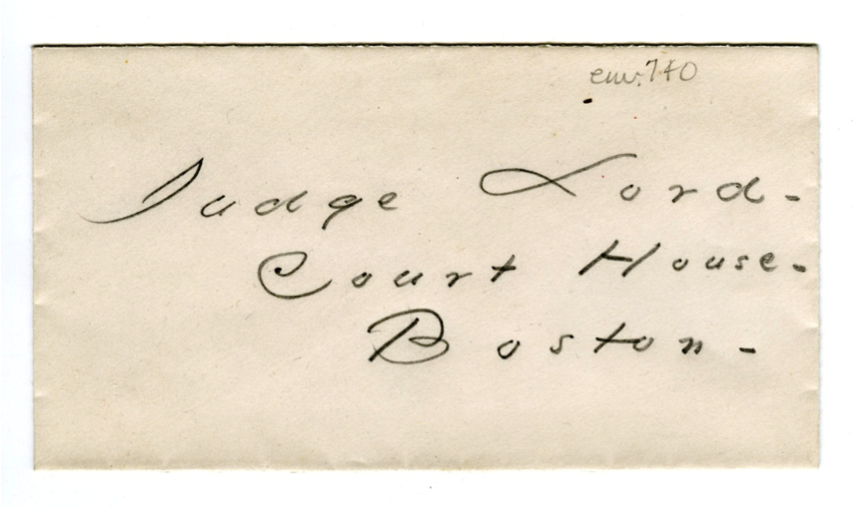
figure 18: The envelope accompanying letter‑fragment A 740. Reproduced by permission of the Trustees of the Amherst College Library, Archives & Special Collections.
The leaves of “To lie so / near your longing –” were carefully folded in quarters and fitted into an envelope: a flat paper container for a letter or thin package usually having a gummed flap or other means of enclosure; to envelope: to wrap, to cover, to sheathe . . .
The scene of writing (and of reading) may be a supremely private place. Like Lukács’s initiated reader in “The New Solitude and Its Poetry,” readers in nineteenth‑century North America recede toward an inner sanctum in which the invitation to reading and writing, forms of “communication” and “annunciation,” is accompanied by a pledge—a seal—of protection.40 In 1862 Dickinson herself wrote, “The Way I read a Letter’s – this – / ’Tis first – I lock the Door – / And push it with my fingers – next – / For transport it be sure –” (JP 636; FP 700). The forty fascicles, like forty locked doors, attest to the power of enclosedness and the stimulus of what Dickinson called “hermetic memory.”
Yet the nineteenth century was also a period fascinated by telephenomena, by “forms of communication from a distance, through new and often invisible channels,” including telepathy.41 It was Dickinson’s greatest gift to affirm extreme inwardness while refusing its legislation, to withdraw into the several isolations of the writing closet while ceaselessly soliciting the Other. In the last writings, mostly letters or drafts, the invisible connections never failed her. Here the envelope is a trope blown open; its contents—the very conditions of interiority—illuminated (exteriorized) against the historical horizon she tested and transgressed. Contents are also Events.
*
Margins Unjustified
A scholar must to his book be true . . . but, when the scholar is a woman and the book no longer true to her, what then? Upside down, on the flyleaf of her father’s inscribed copy of Irving’s Sketchbook, Dickinson traced a poem beginning “I send you a / decrepit flower” (JP 1324; FP 1346).
Dickinson’s late, ungathered papers endlessly swirl into an acrostic of the question, Foucault’s, with which this essay-edition begins and ends without ever answering: Amid the millions of traces left by an author after her death, what makes a “work”? If we dared to publish Dickinson’s late writings as she left them, they would deeply disturb the privileged idea of the work itself, so long associated in our accounts of literary history with the twinned concepts of closure and totality. Indeed, printed just as they appear in manuscript, these compositions would float toward us like the leaves of a sketchbook upon which the progress of the drafts is mapped not through a revelation of authorial intention or through successive acts of reconstruction, but, paradoxically, through the patient documentation of what Foucault calls “the numberless beginnings,” the “accidents,” the “minute deviations” imprinted on the surfaces of the manuscripts themselves.42 Here, on surfaces still strange to us, we would encounter a writer who both fully assented to the exigencies of touch while also freely accepting, even enlisting, every crease of the paper, every slash and blow of the pencil, as a singular fortune. At last even these accidental gestures attain such precision that the idea of finality becomes dispensable and the late compositions appear as complex studies of descent and as desires pointing in different directions.
*
The sole law of abandonment, like the law of love, is to be without return and without recourse.
—Jean-Luc Nancy, La Communauté désoeuvrée
In the interest of clarity I have numbered the manuscripts appearing in these pages sequentially. The numbers are entirely arbitrary, never indicating the infinite number of positions crossed by the mind during the processes of composing and contemplating them. And the points between them are joined by invisible threads that, like the thin cords binding Dickinson’s early manuscripts, will themselves simply dissolve, disappear, once my part in this project finds its end. Then this essay, inscribed between the edges of Dickinson’s papers, shall appear as nothing more than the passagework of the wind that rises to leave them flying.
Again.
Notes
1. Gérard Genette, Seuils (Paris: Editions du Seuil, 1987), 12–13.
2. R. W. Franklin, ed., The Manuscript Books of Emily Dickinson, 2 vols. (Cambridge, Mass.: Belknap Press of Harvard University Press, 1981), 2:1409.
3. Michel Foucault, “What Is an Author?” in The Foucault Reader, edited by Paul Rabinow (New York: Pantheon Books, 1984), 104. I have added the bracketed word, her, to call attention to the issue of gender buried deeply and, in Foucault, silently, within the question.
4. In 1882 Mabel Loomis Todd sent the poet, whom she had never seen and whom she privately called “The Myth,” a painting of Indian Pipes on a black, gilt-edged panel. As Judith Farr points out (The Passion of Emily Dickinson [Cambridge, Mass.: Harvard University Press, 1992]), the style of Todd’s painting is that of the Pre-Raphaelite still life. See especially Farr’s chap. 5, “A Vision of Forms,” 245–313. For a discussion of the role of flowers as “symbols and memorials,” see Barbara Novak, Nature and Culture: American Landscape and Painting, 1825–1874 (New York: Oxford University Press, 1980), 101–34.
5. Thomas H. Johnson, “Acknowledgments,” in The Letters of Emily Dickinson, 3 vols. (Cambridge, Mass.: Belknap Press of Harvard University Press, 1958), xi; emphasis added.
6. Ibid., xxv.
7. James Clifford, The Predicament of Culture: Twentieth-Century Ethnography, Literature, and Art (Cambridge, Mass.: Harvard University Press, 1988), 229.
8. Pierre Macherey, A Theory of Literary Production, translated by Geoffrey Wall (London: Routledge and Kegan Paul, 1978), 52.
9. Quoted from the RLIN database record of the Dickinson holdings at the Houghton Library, Harvard University Library.
10. Susan Howe, “Talisman Interview, with Edward Foster,” in The Birth-mark: unsettling the wilderness in American literary history (Hanover, N.H., and London: Wesleyan University Press, 1993), 158.
11. The Dickinson manuscripts were arranged and cataloged by Jay Leyda in the Folger Shakespeare Library, Washington, D.C., before being sent to the Amherst College Library, Special Collections. Correspondence between Louis B. Wright, director of the Folger Shakespeare Library, and Charles W. Cole, president of Amherst College, confirms that the cataloging was underway in 1955 and that the transfer of manuscripts to Amherst occurred in 1957. Jay Leyda and Millicent Todd Bingham worked together during at least part of this time.
12. Roland Barthes, A Lover’s Discourse: Fragments, translated by Richard Howard (New York: Hill and Wang, 1978).
13. Susan Sontag, Against Interpretation and Other Essays (New York: Anchor Books, 1990), 13. See also Henri Focillon, “In Praise of Hands,” in The Life of Forms in Art, translated by Charles Beecher Hogan and George Kubler, with an introduction by Jean Molino (New York: Zone Books, 1989), 157–85.
14. Frank Kermode, The Genesis of Secrecy: On the Interpretation of Narrative (Cambridge, Mass.: Harvard University Press, 1979), 137.
15. Richard B. Sewall, The Lyman Letters: New Light on Emily Dickinson and Her Family (Amherst: University of Massachusetts Press, 1965). See also Sewall, The Life of Emily Dickinson, 2 vols. (New York: Farrar, Straus and Giroux, 1974), 669.
16. Jean-François Lyotard, Peregrinations: Law, Form, Event (New York: Columbia University Press, 1988), 12.
17. Gillian Brown’s brilliant reading of the relationship between creativity and mass production in Melville’s Pierre (Domestic Individualism: Imagining Self in Nineteenth-Century America [Berkeley: University of California Press, 1990]) confirms and extends my reading of Dickinson’s turn away from the camera eye in a different context. See also Judith Farr, “The Hidden Face,” in Passion of Emily Dickinson, 1–47. Finally, on the importance of the daguerreotype as memento mori in Victorian America, see David Stannard, “Sex, Death, and Daguerreotypes: Toward an Understanding of Image as Elegy,” in America and the Daguerreotype, edited by John Wood (Iowa City: University of Iowa Press, 1991), 73–108.
18. I am grateful to Jeanne Holland for this quotation. See her essay “Scraps, Stamps, and Cut-Outs: Emily Dickinson’s Domestic Technologies of Publication,” in Cultural Artifacts and the Production of Meaning, edited by Katherine O’Brien O’Keefe and Margaret J. M. Ezell (Ann Arbor: University of Michigan Press, 1994). See also Walter J. Ong, Orality and Literacy: The Technologizing of the Word (London: Methuen, 1982).
19. Jean-François Lyotard, The Lyotard Reader, edited by Andrew Benjamin (Oxford: Basil Blackwell, 1989), 242. For a fascinating discussion of “inscription,” see Hélène Cixous, Readings: The Poetics of Blanchot, Joyce, Kafka, Kleist, Lispector, and Tsvetayeva, edited, introduced, and translated by Verena Andermatt Conley (Minneapolis: University of Minnesota Press, 1991), chap. 1, “Writing and the Law,” 1–27.
20. Kathleen Fraser, “Overheard,” Poetics Journal 4 (May 1984): 99.
21. Søren Kierkegaard, Repetition, translated by Howard and Edna Hong (Princeton: Princeton University Press, 1983), 350n.
22. Roger Fry, Cézanne: A Study of His Development (Chicago: University of Chicago Press, 1989), xxiv.
23. Focillon, “In the Realm of the Mind,” in Life of Forms in Art, 126.
24. Lyotard, Peregrinations, 19.
25. Theodora Ward, “Characteristics of the Handwriting,” in The Poems of Emily Dickinson, 3 vols., edited by Thomas H. Johnson (Cambridge, Mass.: Belknap Press of Harvard University Press, 1955), xlix–lix.
26. J. Hillis Miller, Illustration (London: Reaktion Books, 1992), 77. The full quotation reads: “He [Ruskin] understands that there is an element of picture in every letter, and an element of writing in every picture. In an illuminated capital the one flows into the other. They are superimposed or interwoven. The place where one stops and the other begins can scarcely be detected. Where would one put an illuminated capital on my spectrum from pure picture to pure letter? It seems to be at both ends at once, therefore the locus of a battle between the extremes.”
27. Barthes, Lover’s Discourse, 56.
28. John Ruskin, “Of Turnerian Light,” in Modern Painters, edited and abridged by David Barrie (London: André Deutsch, 1987), 454. Here Ruskin describes the following experiment: “Now, leaning over the window sill, bring the edge of the paper against the sky, rather low down on the horizon (I suppose you choose a clear day for the experiment, that the sun is high, and the sky clear blue down to the horizon). The moment you bring your white paper against the sky you will be startled to find this bright white paper suddenly appear in shade. You will draw it back, thinking you have changed its position. But no; the paper is not in shade. It is as bright as ever it was; brighter than under ordinary circumstances it ever can be. But, behold, the blue sky of the horizon is far brighter” (447). For a discussion of the American Luminist painters, see Barbara Novak’s, Nature and Culture; and “On Defining Luminism,” in American Light: The Luminist Movement, 1850–1875, edited by John Wilmerding (Washington: National Gallery of Art, 1980).
29. Jay Leyda, The Years and Hours of Emily Dickinson, 2 vols. (New Haven: Yale University Press, 1960), 474. For an analysis of Dickinson and agoraphobia, see Maryanne M. Garbowsky, The House without the Door: A Study of Emily Dickinson and the Illness of Agoraphobia (London and Toronto: Associated University Presses, 1989). See also Gillian Brown’s “The Empire of Agoraphobia,” in Domestic Individualism, in which she defines agoraphobia as an essentially “anti-commercial condition.”
30. Jerome J. McGann, The Textual Condition, (Princeton: Princeton University Press, 1991), 3.
31. Janet Gurkin Altman, Epistolarity: Approaches to a Form (Columbus: Ohio State University Press, 1982), 123.
32. Brown, Domestic Individualism, 150.
33. Jonathan Goldberg’s work Writing Matter: From the Hands of the English Renaissance (Stanford: Stanford University Press, 1990) helped me rethink Dickinson’s practice of copying.
34. Maurice Blanchot, “Translating,” translated by Richard Sieburth, Sulfur 26 (1990): 82–86.
35. I have considered as fair copies those drafts Dickinson composes in a version of her “performance script” and on fine stationery. This category, however, remains problematic and invites rethinking.
36. Susan Stanford Friedman, “The Return of the Repressed in Women’s Narrative,” Journal of Narrative Technique 19 (Winter 1989): 141.
37. For a discussion of the mutilation of packet 80, see R. W. Franklin, The Editing of Emily Dickinson: A Reconsideration (Madison: University of Wisconsin Press, 1967), 67–81. See also Martha Nell Smith, “Gender Issues in Textual Editing of Emily Dickinson,” Women’s Studies Quarterly 19, nos. 3–4 (Fall–Winter 1991): 78–111; Rowing in Eden: Rereading Emily Dickinson (Austin: University of Texas Press, 1992); and Ellen Louise Hart, “The Encoding of Homoerotic Desire: Emily Dickinson’s Letters and Poems to Susan Dickinson, 1850–1886,” in Emily Dickinson: Woman of Letters, selected, arranged and augmented by Lewis Turco (Albany: State University of New York Press, 1993), 99–128.
38. Jeanne Holland and Martha Nell Smith argue that the cuts in the manuscripts constitute a form of “hysterical mutilation,” whereas I read them, at least potentially, as integral to Dickinson’s writing process. See Holland, “Scraps, Stamps, and Cut-Outs: Emily Dickinson’s Domestic Technologies of Publication”; and Smith, Rowing in Eden.
39. Friedman, “Return of the Repressed,” 141.
40. George Lukács, “The New Solitude and Its Poetry,” in Soul and Form, translated by Anna Bostock (Cambridge, Mass.: MIT Press, 1974), 79–80. For a fascinating discussion of the legislation of privacy in nineteenth-century America, see Christopher Benfey, Emily Dickinson and the Problem of Others (Amherst: University of Massachusetts Press, 1984).
41. Nicholas Royle, Telepathy and Literature: Essays on the Reading Mind (Oxford: Basil Blackwell, 1991), 5. Barton Levi St. Armand has written extensively on Dickinson and spiritualism. See, for example, his essay “Veiled Ladies: Dickinson, Bettine, and Transcendental Mediumship,” in Studies in the American Renaissance, edited by Joel Myerson (Charlottesville: University Press of Virginia, 1987), 1–51.
42. Michel Foucault, “Nietzsche, Genealogy, History,” in Rabinow, Foucault Reader, 81.
- Log in to post comments

